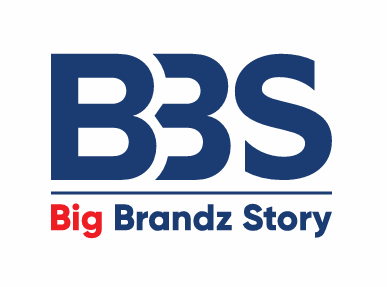In a digital age ruled by transparency, authenticity, and attention economics, brands are no longer faceless corporations. They are narratives. They are values. They are personalities. And increasingly, they are becoming extensions of the very people who build them. One of the most powerful and emerging shifts in the modern marketing landscape is the rise of the CMO (Chief Marketing Officer) as the influencernot just behind the scenes, but front and center.
Once confined to boardrooms and brand decks, CMOs today are stepping into the spotlight. They are building their personal brands alongside their corporate ones, creating content, hosting podcasts, writing newsletters, and appearing on social platforms not as executivesbut as relatable, visionary storytellers. This transformation isn’t a trend—it’s a signal of how humanized branding and leadership have become essential to business success in 2025 and beyond.
Over the last decade, the way consumers connect with brands has changed fundamentally. We no longer trust traditional advertising at face value. We follow people, not logos. We’re more likely to be influenced by someone we perceive as real and relatable than a perfectly produced ad campaign. This behavior has opened the door for a new kind of brand leadership one that’s not rooted in titles but in presence. When a CMO, CEO, or brand founder shows up on LinkedIn, Twitter, or Instagram with authenticity, vision, and vulnerability, it bridges the gap between brand and audience. It turns marketing into a conversation. It makes brands human.
Think of Pedro Earp, the CMO of AB InBev. Rather than remaining behind-the-scenes, Pedro has become an outspoken figurehead for the company’s innovative and purpose-driven strategies. His content spans everything from sustainability to leadership philosophies creating a narrative that goes beyond beer, touching on the future of responsible consumption and brand accountability. Or consider Gary Vaynerchuk, the serial entrepreneur who built VaynerMedia. While not a traditional CMO, Gary’s approach epitomizes the creator-executive model. His daily content, raw authenticity, and motivational tone have created a tribe that trusts his voice and by extension, his businesses. His personal influence amplifies his professional impact.
The logic is simple: if a person builds trust and visibility, they pull their brand along with them. CMOs are realizing that their voice can carry more weight than any 30-second ad spot. By building their own platforms, they create direct lines to customers, partners, investors, and talent unfiltered, unguarded, and powerful. This is not about self-promotion. It’s about building trust. When CMOs create content, share behind-the-scenes perspectives, or talk about failures and pivots, they open a window into how decisions are made, how values are lived, and how innovation is executed. That kind of access builds credibility faster than any press release ever could.
More than just gaining visibility, this approach shifts the power dynamic. It transforms consumers from mere observers into participants. When a marketing leader opens up online whether by responding to questions, sharing their creative process, or documenting a day at the office it humanizes the brand in ways traditional marketing can’t. People don’t just buy into a company’s message; they buy into the person delivering it. And the algorithms reward this kind of visibility. Platforms like LinkedIn, YouTube, Instagram Reels, and even TikTok prioritize people over brand pages. A CMO who delivers thought-provoking insights can outpace the brand’s ad spend in organic engagement. That’s efficient, scalable, and resonates with how today’s consumers interact with content. It’s modern marketing in its most human form.
The emergence of what we might call the “creator-executive” is one of the most fascinating evolutions in modern branding. Today’s CMOs are writers, speakers, podcasters, and even on-camera personalities. They are participating in panels, hosting live Q&As, and narrating the behind-the-scenes hustle that once remained invisible to the public. Their content blends professional acumen with personal reflection, industry leadership with social relevance. In doing so, they build bridges not only between brand and buyer, but also between the corporate world and the cultural conversation.
Real-world examples bring this to life. Kudzi Chikumbu, Global Head of Creator Marketing at TikTok, exemplifies this dual role. His presence on social media isn’t just polished PR it’s an embodiment of how executives can lead with personality and empathy. He uplifts creators, breaks down industry trends, and shares his own journey navigating leadership. This authentic storytelling creates emotional resonance, fosters trust, and sets a new benchmark for executive branding. Bozoma Saint John is another standout figure. Known for her bold roles at Apple, Uber, and Netflix, she blends charisma with substance. Her public presence is not merely about flair it’s about visibility, cultural alignment, and courage. She doesn’t just influence with style she leads with purpose.
This generational shift plays a big role in shaping expectations. Millennials and Gen Z, the dominant consumer forces today, value transparency, authenticity, and action. They want to know what companies stand for. They scrutinize leadership. They want marketing that feels more like a message from a friend than a corporate announcement. A CMO who shares real stories struggles, lessons, wins earns not only attention but loyalty. That loyalty becomes a community. That community becomes momentum.
With this shift comes a new strategic toolkit. CMOs are now managing not only brand assets but personal content ecosystems. They are identifying their own “content pillars,” such as leadership insights, company culture, industry predictions, and diversity advocacy. Their personal presence becomes a strategic channel one that complements the brand but doesn’t parrot it. This autonomy makes them not only more influential but also more innovative.
The benefits of this approach are massive. For one, it creates a multi-dimensional narrative around the brand. Instead of a single voice or slogan, the brand becomes a symphony of perspectives. The CMO becomes a character in the brand story one that audiences relate to, root for, and trust. This also has powerful internal ripple effects. Employees feel more connected. Culture becomes more transparent. Recruitment becomes easier. Media attention becomes organic.
However, this isn’t without challenges. There’s a delicate balance between personality and professionalism. Oversharing or going off-brand can damage credibility. There’s also the time investmentcreating quality content consistently isn’t easy, especially when juggling leadership responsibilities. Some CMOs may not feel comfortable in front of a camera or writing personal reflections. That’s where executive coaching, social strategy teams, and content consultants come in. When done thoughtfully, even introverted leaders can establish a powerful voice online.
Brands themselves are beginning to institutionalize this trend. We’re seeing the rise of internal influencer programs where leaders across departments are encouraged and supported in building their own digital presence. It’s no longer just the CMO; the CTO talks about tech ethics, the CHRO posts about workplace culture, the CFO explains funding strategies. This distributed storytelling strategy builds depth, trust, and visibility across the board. It also future-proofs the brand by creating an army of ambassadors who reflect its values authentically.
In the near future, we’re likely to see a new kind of executive emerge: the “full-stack leader”someone who not only guides business operations but also understands narrative, audience psychology, and digital media. These leaders will drive business by building tribes, not just selling products. They will measure success not only in ROI but in resonance, reach, and relatability.
As CMOs evolve into influential content creators, the ripple effect of their transformation reaches far beyond marketing. It reshapes brand identity, corporate communication, investor relations, and even how leadership is perceived. It signals that emotional intelligence, storytelling ability, and digital fluency are no longer ‘soft skills’ they are central to business influence. In this world, a strong personal brand doesn’t subtract from the company it enhances it.
The relationship between the leader’s voice and the brand’s voice becomes symbiotic. A CMO’s posts might highlight internal culture and mission alignment, making the company more attractive to job seekers. Their public support for DEI initiatives might lend credibility to the brand’s broader ESG goals. Their participation in a viral TikTok campaign could humanize a legacy brand that once felt outdated or distant. These aren’t coincidences—they are deliberate, strategic forms of value creation.
What’s notable is how this trend levels the playing field. It doesn’t matter if the brand is a global conglomerate or a growing startup. A CMO who builds a community around their personal message and business philosophy can outperform much larger competitors in brand engagement. Consumers today crave connection. They’re drawn to stories that feel human, not polished. A selfie video that offers real advice can sometimes outperform a six-figure campaign that feels sterile or too perfect.
In many ways, the pandemic accelerated this shift. As physical events were canceled and boardrooms turned into Zoom calls, the walls between personal and professional spaces collapsed. Suddenly, CMOs were broadcasting from their living rooms, giving keynotes via webcams, and joining Instagram Lives to discuss everything from mental health to business pivots. The accessibility created during that time sparked a demand that hasn’t gone away. People now expect to see the people behind the brand, not just the logo.
As a result, CMOs must now navigate the evolving expectations of public leadership. They are expected to speak out during moments of social unrest, address criticism transparently, and embrace the grey areas of public discourse. Silence, in some cases, is seen as complicity. Leadership today demands clarity of values and the bravery to express them in real time. A single post can define a leader’s reputation for months or years.
But this is also where true differentiation lies. The CMO who is unafraid to tackle tough issues, to share the brand’s stance even when it may spark debate, becomes a beacon for like-minded audiences. Yes, it may alienate some but it will deepen loyalty among those who matter most. This values-first approach is not only good ethics it’s good business.
More than ever, brand perception is shaped in the comment section, the quote retweet, and the stitched reel. The traditional one-way marketing pipeline is gone. Today, marketing happens in real time, in communities, in subcultures, and in co-created moments. CMOs who are embedded in these ecosystems, who aren’t just broadcasting but listening and responding, are building future-proof brands. They’re not just speaking to consumers they’re coexisting with them.
In this age of decentralization, the notion of authority has changed. We don’t believe someone because they wear a title we believe them because they show up, consistently, and speak truthfully. In that sense, a CMO’s greatest power is their ability to be present: not just in strategy rooms, but in online discourse, pop culture conversations, and the places where brand meaning is being formed.
And it’s not just about visibility. The best CMO-creators are deeply educational. They teach their audiences about marketing frameworks, product journeys, campaign decisions, and leadership philosophies. They don’t hold knowledge hostage. They democratize it. This not only builds authority, but also creates a ripple of goodwill that amplifies the brand’s relevance and accessibility.
Some have called this the “Oprahfication” of executive leadership the idea that leaders should be inspirational, empathetic, and present. But it’s more nuanced than that. Today’s CMO doesn’t just aspire to inspire they are measured by how well they engage, inform, and empower. Their platforms are classrooms, their posts are case studies, and their lives are proof of the values they claim.
Looking forward, we may see companies include executive content engagement KPIs in performance reviews. Just as brands measure share of voice and sentiment, they may begin to assess how well their leaders are driving conversation, building community, and embodying the mission in the public sphere. We may even see CMO-led media brands YouTube channels, Substack publications, or branded podcasts that blur the line between personal and professional content.
The key to all of this is consistency. A CMO cannot post once a quarter and expect results. Influence is a function of frequency. It’s built one post, one insight, one interaction at a time. Over weeks and months, these touchpoints add up to trust. And trust, in a crowded, skeptical market, is the most valuable currency of all.
It’s also worth noting that the rise of the CMO as influencer doesn’t exist in a vacuum. It reflects a broader shift in how we perceive influence. No longer the sole domain of celebrities, influence now belongs to those who show up with clarity, care, and consistency. It belongs to creators, educators, and thinkers who contribute meaningfully to culture. CMOs who understand this and who see themselves not just as strategists but as storytellers—are poised to shape the next era of brand building.
In summary, we are witnessing a transformation in real time. The marketing executive is becoming the media. The strategist is becoming the speaker. The builder is becoming the brand. And in doing so, they’re not just helping their companies succeed they’re helping redefine what leadership looks like in the 21st century.











